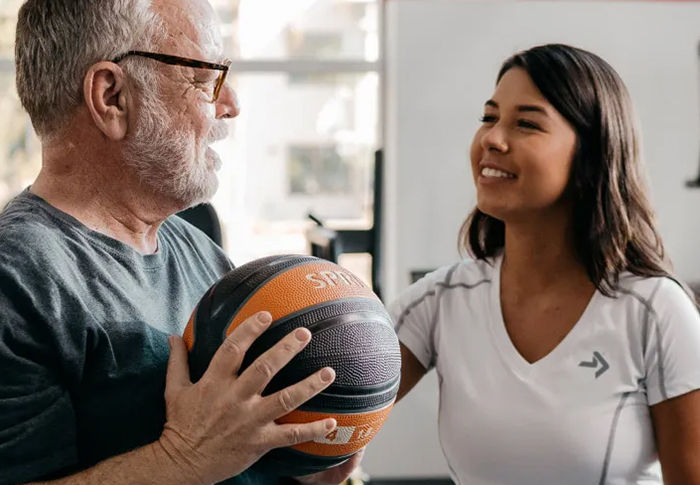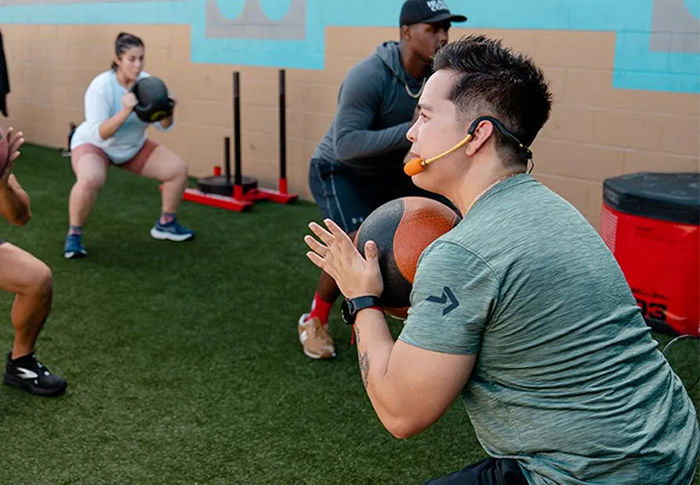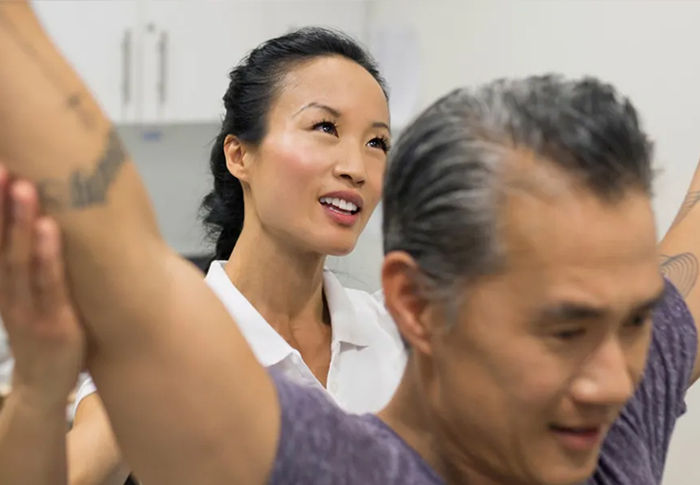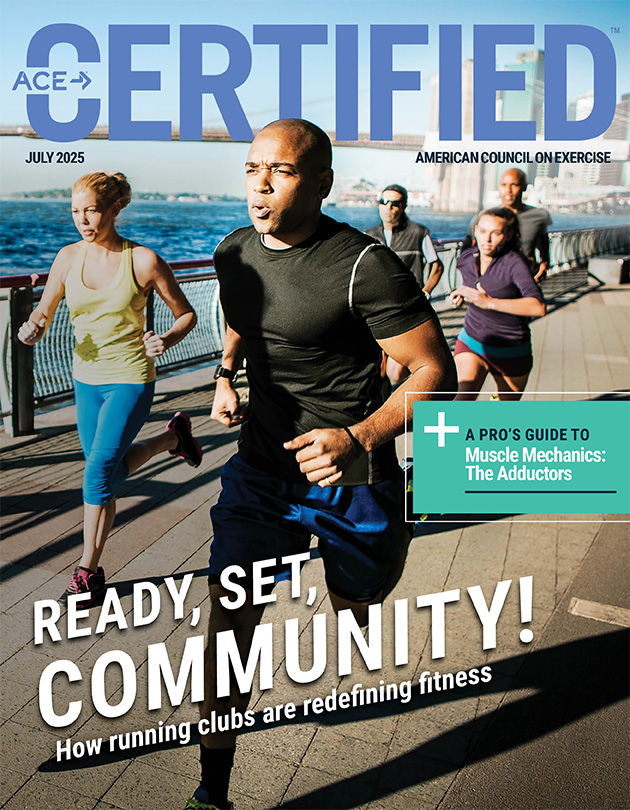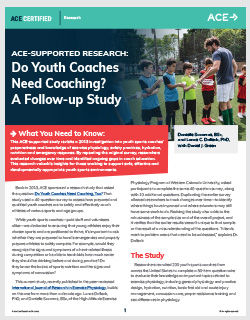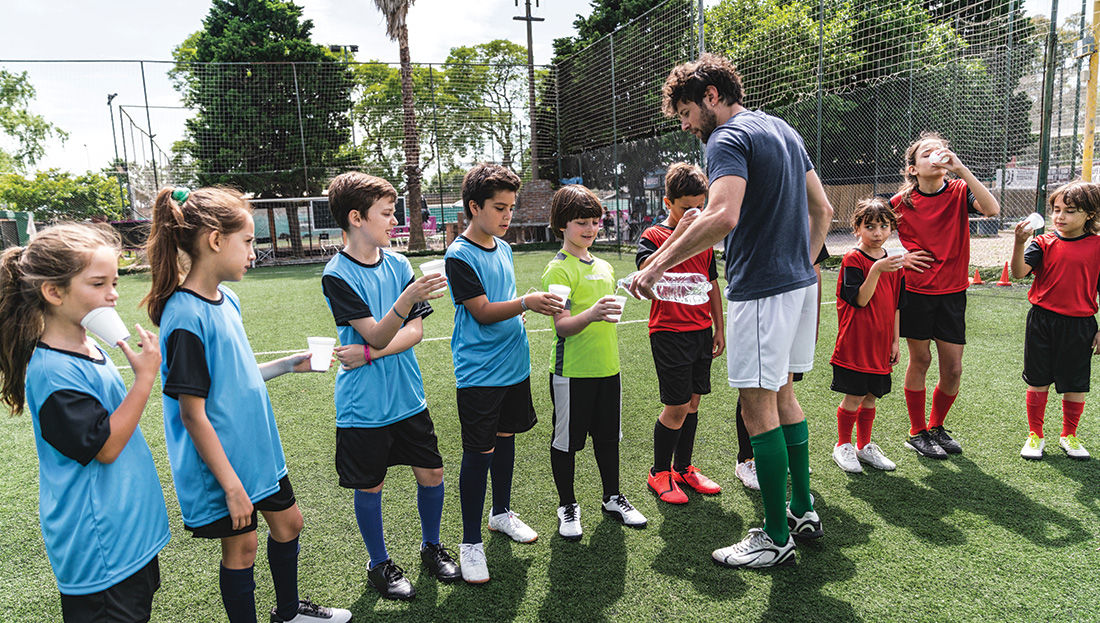
Back in 2013, ACE sponsored a research study that asked the question: Do Youth Coaches Need Coaching, Too? That study used a 40-question survey to assess how prepared and qualified youth coaches are to safely and effectively coach athletes of various sports and age groups.
While youth sports coaches—paid staff and volunteers alike—are dedicated to ensuring that young athletes enjoy their chosen sports and are positioned to thrive, it’s important to ask whether they are prepared to handle emergencies and properly prepare athletes to safely compete. For example, would they recognize the signs and symptoms of a heat-related illness during competition or be able to teach kids how much water they should be drinking before and during practice? Do they know the basics of sports nutrition and the signs and symptoms of concussion?
This current study, recently published in the peer-reviewed International Journal of Research in Exercise Physiology, builds on the one from more than a decade ago. Lance Dalleck, PhD, and Danielle Socarras, BSc, of the High Altitude Exercise Physiology Program at Western Colorado University, asked participants to complete the same 40-question survey, along with 10 additional questions. Duplicating the earlier survey allowed researchers to track changes over time—to identify where things have improved and where educators may still have some work to do. Redoing the study also adds to the robustness of the sample size and of the overall project, and it verifies that the earlier results weren’t unique to that sample or the result of a misunderstanding of the questions. “It lends merit to problem areas that need to be addressed,” explains Dr. Dalleck.
The Study
Researchers recruited 200 youth sports coaches from across the United States to complete a 50-item questionnaire to evaluate their knowledge on important topics related to exercise physiology, including general physiology and practice design, hydration, nutrition, basic first aid and acute injury management, concussion care, proper resistance training and sex differences in physiology.
Descriptive data for the study participants is shown in Table 1. As you can see, while the majority of study participants were below the age of 30, most had a bachelor’s degree or higher, the majority majored in health sciences or physical education, and 89% played sports at a collegiate or professional level. Based on this data, this is a population you might expect to have a firm grasp on the basics of exercise physiology, coaching techniques and sports nutrition.
Table 1. Descriptive Characteristics of the Participants

The Results
The participants’ overall score on the questionnaire was 74%, which was similar to the 72% grade achieved by participants in the 2013 ACE-sponsored study mentioned earlier, which was led by John Porcari, PhD, of the University of Wisconsin, Lacrosse. (This study is referred to below as Porcari, 2013.)
There were six questions that fewer than 50% of participants answered correctly, which are presented below. Correct responses are bolded and the percentage of participants who chose each response appears in parentheses.
5. Fluid intake should be dictated by taste preference, since volume of intake, rather than fluid content, is the most critical issue in child athletes.
- True (10.3%)
- False (89.7%—this was the most frequently missed question)
10. If children are ready to participate in organized sports, they are also ready for some type of strength training.
- True (41.4%)
- False (58.6%)
13. One of the athletes on your team has begun to struggle in practice. He looks pale and complains of dizziness, fatigue, and a throbbing headache. As he describes his symptoms, he begins to vomit. When you try to talk to him, he is somewhat disoriented. He does not fall or hit his head. As his coach, what should you do?
- Have the child lie down on the ground where he is, identify a person to call 9-1-1 while you offer the child ice cold water, give the child a fever-reducer such as Tylenol or ibuprofen, and await EMS arrival (3.4%)
- Move the child to shade, identify a person to call 9-1-1 while you remove protective equipment and clothing, give the child a fever-reducer such as Tylenol or ibuprofen, force the child to drink ice cold water, and await EMS arrival (13.8%)
- Remove the child from practice and move him to the shade, instruct an assistant coach to attend to the athlete and call the child’s mother while you call 9-1-1, and continue practice while you await arrival of the child’s parents and EMS (34.5%)
- Move the child to shade, identify a person to call 9-1-1 while you remove protective equipment and clothing, spray cold water on the child, and await EMS arrival (48.3%)
26. What is a good way to monitor an athlete’s hydration levels during exercise?
- Asking the athlete how thirsty they are after practice (13.8%)
- Observing the athlete’s rate of sweating (51.7%)
- Weighing the athlete before and after practice (17.2%)
- Monitoring reaction time and coordination (17.2%)
27. During which of the following is it MOST appropriate to consume electrolyte-supplemented beverages such as sports drinks?
- When activity lasts longer than 30 minutes (34.5%)
- During high-intensity strength-training workouts (17.2%)
- Whenever participants are visibly sweating (27.6%)
- When the schedule calls for repeated same-day sessions (20.7%)
46. Which muscle fiber type recovers faster from a workout?
- Fast twitch (58.6%)
- Slow twitch (41.4%)
Interestingly, there were three questions from Porcari’s 2013 research that more than 50% of participants answered incorrectly but that no longer fell below that threshold in this current research, illustrating that the coaches’ knowledge (and perhaps public knowledge) of these topics has improved over the ensuring years. Correct answers have been bolded and the percentage of participants who chose the correct response then (Porcari, 2013) and now (current study) is provided in parentheses.
36. The performance of strength training by children and adolescents should be ______________.
- Discouraged due to the potential for damage to their growth plates
- Avoided due to the increased risk of musculoskeletal injury
- Allowed only if the youth are mature enough to exercise on their own
- Encouraged to reduce the risk of sports-related injuries (then: 34.3%; now: 79.3%)
38. Nausea, initially pale and then flushed skin, and lightheadedness are some acute signs and symptoms of what?
- Heat cramps
- Dehydration (then: 47.1%; now: 55.2%)
- Hypothermia
- Heat stroke
39. What percentage of a child’s caloric intake should be carbohydrates?
- 55–70% (then: 48.6%; now: 65.5%)
- 25–35%
- 12–15%
- 70–85%
Finally, there was one question in the Porcari, 2013 study that a slight majority of participants answered correctly (meaning it didn’t fall below that 50% threshold the researchers used to identify questions participants struggled with), but that was of particular concern because of the importance of its topic:
8. Rapid swelling of the brain following a second head injury that occurs before the symptoms of a previous head injury have resolved is referred to as _________.
- Second cerebral injury
- Second impact syndrome (then: 52.9%; now: 69%)
- Second relative abrasion
- Post-concussive syndrome
The improvement in the coaches’ understanding of this vital element of athlete safety is encouraging.
Another encouraging element of this study is that the participants displayed a considerably high level of knowledge across various exercise physiology–related categories, as evidenced by the fact that for more than half of the items in the questionnaire, there was a correct response rate of greater than 80%.
The Bottom Line
As of 2024, the number of children participating in youth sports has risen to over 60 million in the U.S. alone. This means that the need for youth coaches has increased tenfold to 6.5 million coaches in the past 30 years. Their role extends beyond teaching athletes the skills of their particular sport to also include certain elements of exercise physiology that play an important role in the development of youth athletes.
This study reveals that there is a tremendous opportunity for ACE Certified Professionals to serve their communities by providing much-needed education to youth sports coaches. As Dr. Dalleck says, “You’re in a profession that there is a great need for out in society, to help those with these real-world issues and real-world problems.”
That opportunity centers on educating coaches in your community by offering workshops or educational materials in your area, or in your league if you yourself are coaching. The most glaring area of concern based on responses to this survey is hydration and potential heat-related concerns. Other areas of focus include second-impact syndrome, recovery strategies and sports nutrition.
It’s important to highlight that there’s no need for in-depth knowledge of exercise science in order to coach youth sports. Instead, it’s more about understanding the basics of specific elements of physiology that impact the safety and efficacy of coaching—things like the signs and symptoms of dehydration, heat-related illness or concussion; guidelines for what athletes should eat and drink before, during and after practicing or competition; and proper recovery strategies that will optimize performance.
Finally, you’ll want to offer this education while acknowledging what Dr. Dalleck calls “the goodwill and the enthusiasm” youth sports coaches typically bring to the table. The idea is to help them recognize the need to increase their skill and knowledge levels in order to coach young athletes more safely and effectively, while also honoring the fact that they have stepped up to serve their community.
When it comes to the young athletes themselves, “[Coaches are] hopefully creating a love for a lifelong activity,” says Dr. Dalleck. Educating young athletes about proper nutrition, hydration and recovery, for example, can carry over into adulthood when they’re ideally continuing to lead active lifestyles. Improving the knowledge base of coaches so that they can in turn educate their young athletes will yield dividends well beyond the fields, courts and swimming pools where these children and adolescents currently compete and hopefully set them up for a lifetime of enjoying physical activity.

